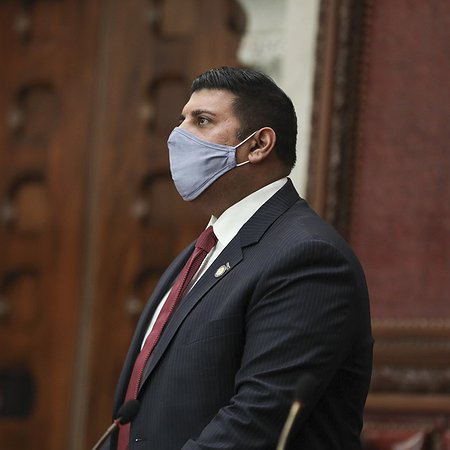Albany County Officials Mislead Public About Bail Reform
A WNYT news report allowed law enforcement officials in an Albany County community to mislead the public about bail reform and fearmonger about a man who has been arrested multiple times.
The Briefing

A WNYT news report allowed law enforcement officials in an Albany County community to mislead the public about bail reform and falsely suggest that pretrial incarceration is the only solution to respond to society’s inability to produce sufficient resources for all community members.
Watervliet Police Chief Joseph Centanni and Albany County District Attorney David Soares argue that there are not enough supportive resources for people charged with crimes. But instead of advocating for investments in communities that actually work, Centanni and Soares take aim at the state’s bail reform laws – which have been rolled back three times, allowing for more pretrial detention – for not being punitive enough.
Jail does not make us safer
The central claim of law enforcement officials in this story – and pro-carceral voices in general – is that bail reform laws should be rolled back or eliminated because society has not provided enough supportive resources for people struggling with poverty, untreated mental illness, or substance abuse, and the only viable solution is to take away their freedom.
This is a false premise. We know we need more investments in housing, jobs, treatment, and service-based interventions. These solutions actually reduce crime and keep us all safe. In contrast, jail is not an effective public safety solution.
For years, law enforcement officials have spent their time, energy, and positions of power to decry bail reform. Had law enforcement used that power to advocate for the resources they say New Yorkers need in this article, we would be safer. Instead, they continue to lazily, cynically, and illogically claim that jail cures all of society’s problems.
Pretrial detention has a criminogenic effect, meaning jail can increase the likelihood that someone commits another crime. It destabilizes families and communities, producing housing insecurity, criminalizing and exacerbating mental illness and substance use disorders, and reducing the earning power of people who are arrested. Moreover, overcrowding and mismanagement produces dehumanizing and deadly jail conditions, to the point where the NYC Department of Corrections is no longer announcing jail deaths.
Not only is jail ineffective, it is expensive. The cost of incarcerating someone at Rikers has quadrupled since 2011 to over $500,000 per person per year. Incarcerating someone like the man mentioned in the WNYT story would undoubtedly cost much more than providing him with the resources necessary to stabilize his life. When society has failed to meet the needs of a community member time and time again, jail cannot be the solution.
Judges have wide discretion to set bail
Centanni’s misleading claims about New York’s bail reform laws go unchallenged. First, Centanni claims New York legislators have not given judges sufficient discretion to consider the “danger” of someone charged with a crime. New York does not have a dangerousness standard for good reason. Such standards produce racist results and increased pretrial jail populations while further introducing ambiguity and opacity into our criminal legal system. Any dangerousness standard would only further exacerbate racial disparities in New York’s jails, where Black and brown people make up 73 percent of New Yorkers incarcerated in jail but 36 percent of the state’s population.
Moreover, judges in New York have discretion to set bail on a wide range of violent and non-violent crimes. They regularly employ their ample discretion. According to a report by New York Focus, some judges set bail in nearly 8 out of 10 eligible cases. Almost 80 percent of people jailed pretrial on Rikers Island are there because a judge set bail on a violent felony. This debunks Centanni’s later claim that judges are releasing “violent offenders.”
Some judges have even admitted to ignoring the law and using a de facto “dangerousness” standard. One judge stated she made bail decisions based on who she believed “should not be out in the community” and not based on the statutory purpose of bail, which is to ensure someone’s return to court. This admission shows why, in 2019, legislators removed judicial discretion about bail decisions for low-level crimes, acknowledging that people accused of low-level crimes do not deserve to be subjugated to the violence, danger, and isolation of jail.
Bail reform is a successful public policy
The WNYT story is an example of shoddy reporting practices. The reporter did well to quote a public defender, but ultimately produced a story – clearly placed by law enforcement, who regularly lie about bail reform – that fearmongers about a Black man allegedly committing crime in the community. Ultimately, the story fails to render an honest picture of bail reform in New York.
Study after study after study shows that bail reform in New York has been an unmitigated success. It reduces recidivism. It has no connection to any increases in crime. It led to more people showing up for their court dates. Most importantly, it has produced freedom for thousands of New Yorkers who would have otherwise been separated from their families and communities.
Story Link
Link to WNYT news report








